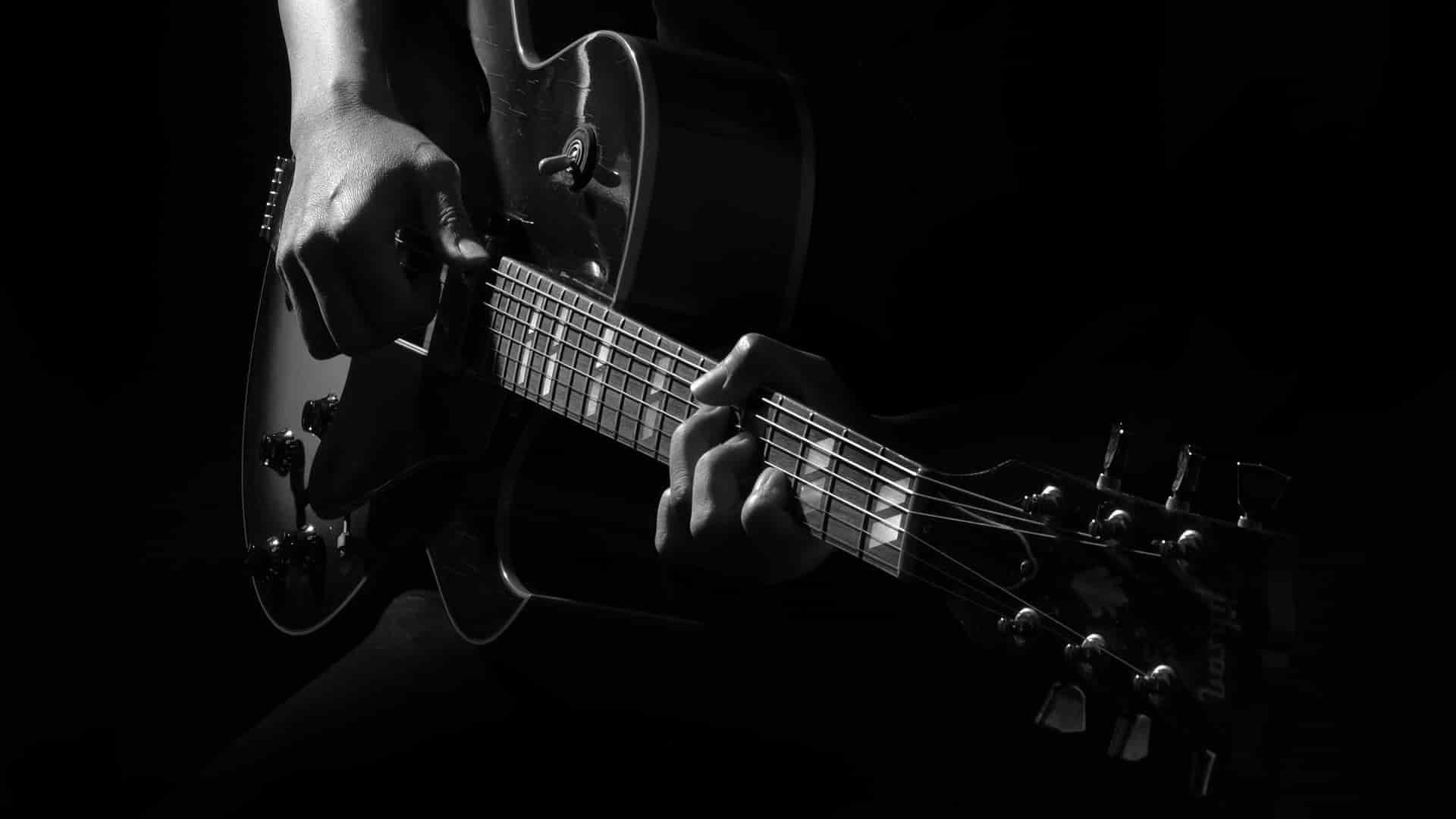GSCC Lesson 21
Past Lessons Summary and Links
If you are new to this series, here’s the links to past lessons:
We had covered all the family chords and their siblings in key of C and G Major:
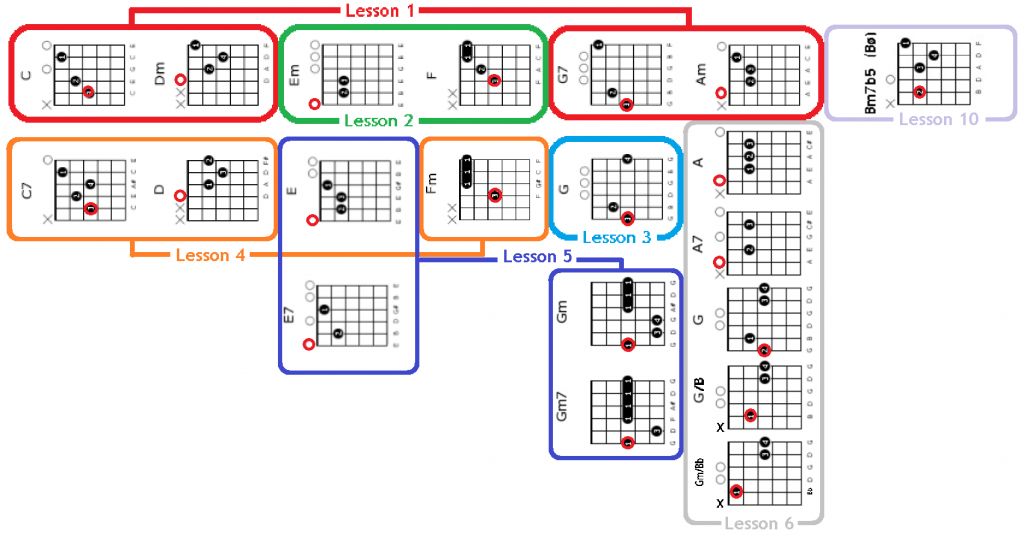
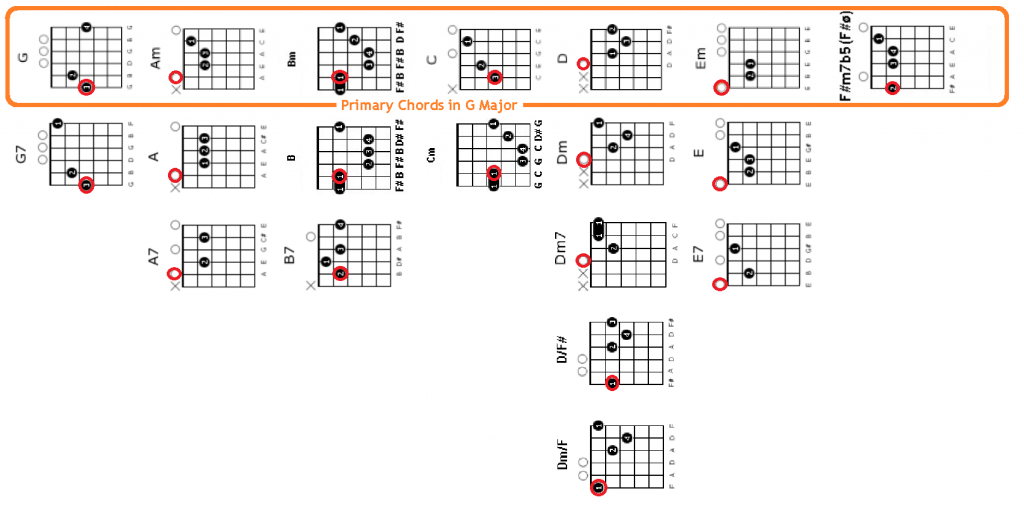
Key of C major and G major are common keys used by guitarist to play sing-along guitar.
We also looked at the guitarist best friend – CAPO , and it’s application.
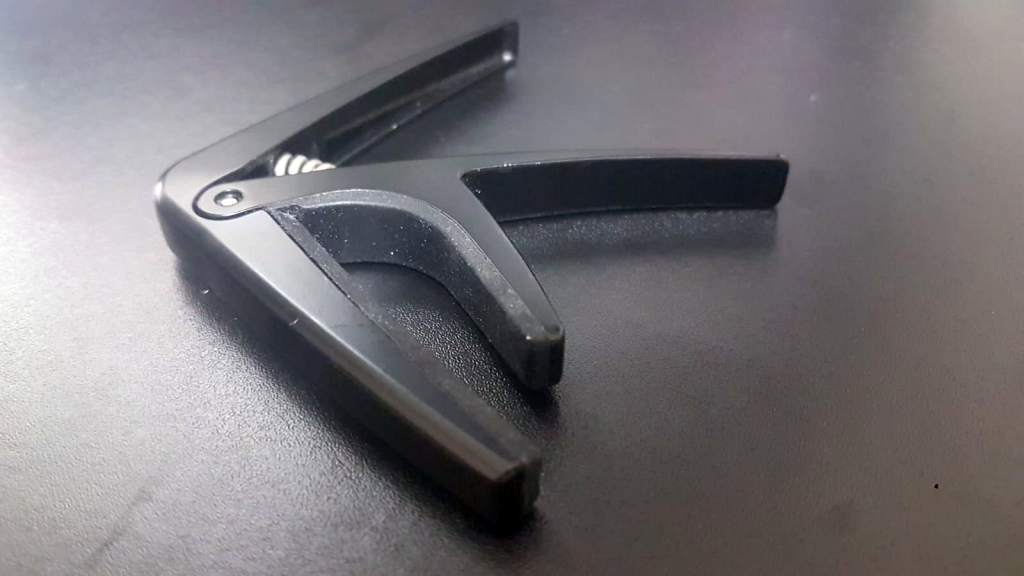
When we use the CAPO in conjunction with chords from C and G keys above , we are able to play almost every pop songs we wanted to play.
We have also looked at some basic strumming patterns:
| 1 | One strum per beat |
| 2 | Up-stroke strumming |
| 3 | Strumming lightly on first few strings |
| 4 | 16 beat strum |
| 5 | Campfire Strum |
| 6 | “Chuck” Strum |
| 7 | 3/4 Strum |
| 8 | 6/8 Strum |
And we had explored some basic pluckings.
| 1 | 8 beat pluck #1 |
| 2 | Double string pluck |
| 3 | 3/4 Pluck |
| 4 | “Alternate Bass” Pluck |
| 5 | 6/8 Pluck |
| 6 | Slap Rhythm |
And of course, we had fun learning all these songs !! They are specially produced “Karaoke for Guitar” videos (only vocal and metronome count) for you to practice your strumming / plucking:
Last week, we looked the good practice of putting the melody on 1st 2/3 strings:

With that, we addressed the issue of melody issues of the week before , transposed and played “Over The Rainbow” solo guitar in key of C .
Click here to ask a question …
Another factor to consider when finding the optimum key for melody
Sometimes , the melody range of a song is too wide. The high or the low note maybe too extreme, eg. the high note maybe over 12 fret, the low note may have too little strings to define the chord.
Another factor to consider is to look at the activities of the notes. Find a key which has most of the activities of notes reside in a comfortable part of the fretboard.
If the highest or lowest notes do not appear frequently, you can also let them reside at extreme range, giving priority to those range of notes which are occurring more often.
Click here to ask a question …
How To Create Rhythmic Flow For Chord Melody Guitar Arrangement
Some of you may want to know more about creating accompaniment line for chord melody arrangement (the Step 4 of the process).
Our usual practice is to define the chord melody first , then fill in the gap between each chord melody phrasing by playing our usual pattern.
Another way to look at it is after the chord melody is defined (step 3), we use those defined chord melody position as the chord shape location, and then play the whole song’s accompaniment with those chord shape:

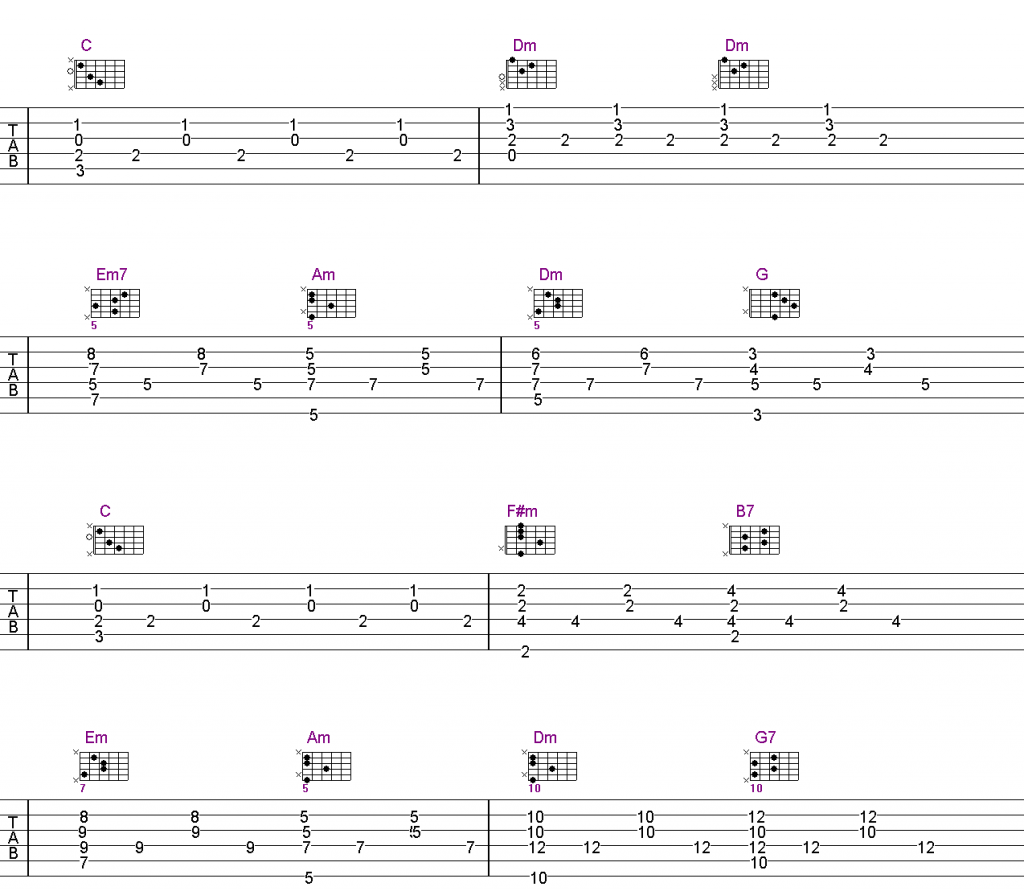
After you had mastered the accompaniment with those chords shape, try to play the accompaniment again while “injecting” the chord melody phrases into the appropriate places:

For some, this may be a better approach because the flow is more natural. The process is like you are accompaniment a singing, be it yourself or others. You keep the accompaniment flowing. While the singer sings, you simply “inject” the chord melody phrases into the accompaniment flow.
Here’s the rest of the song presented in this perspective:
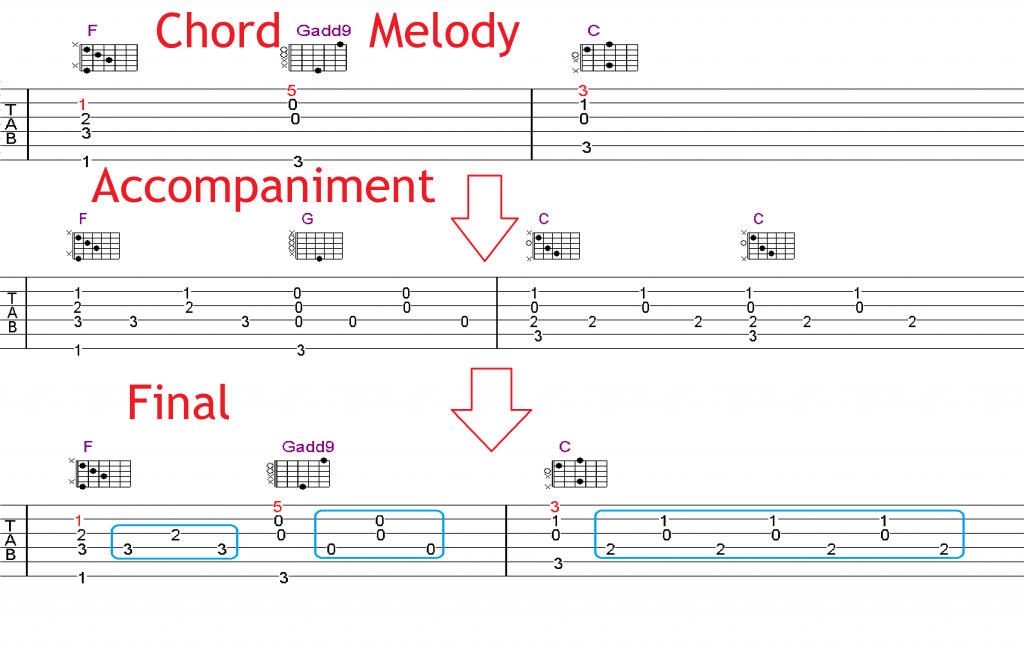
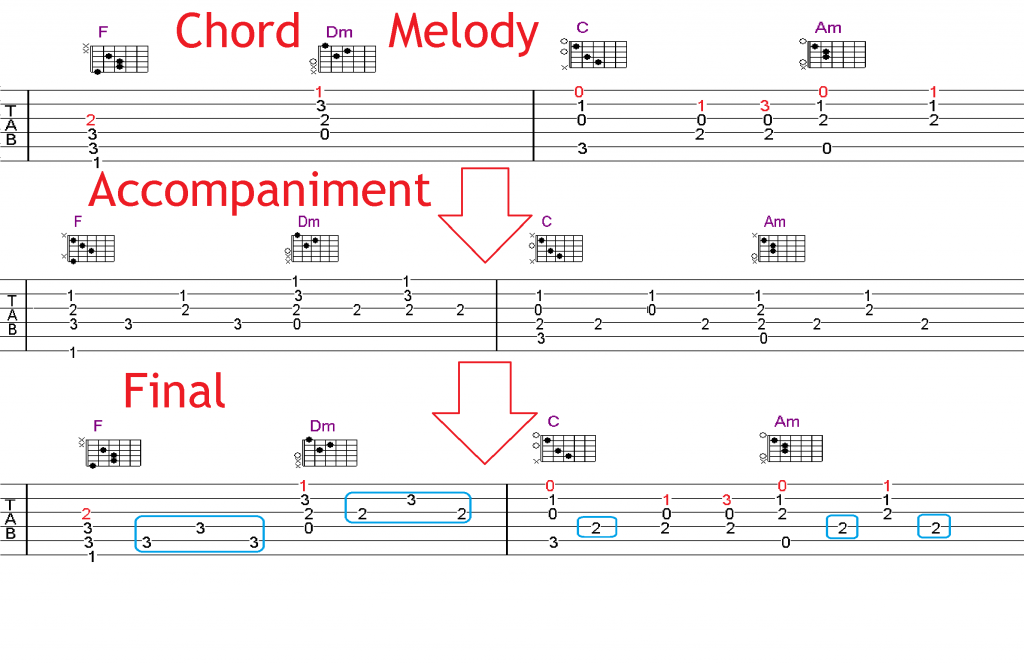
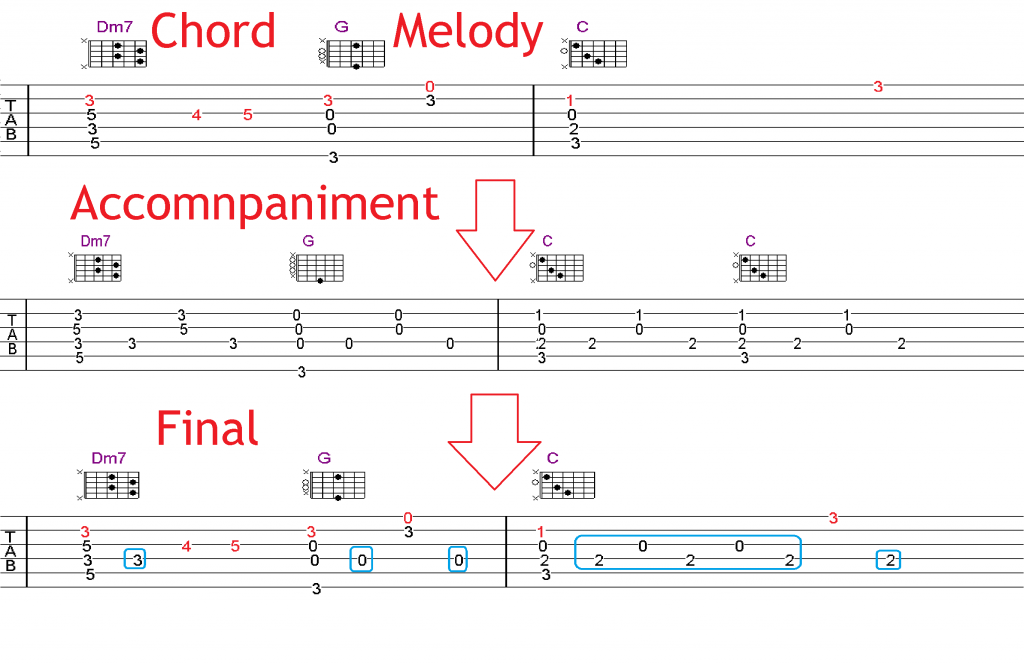
Here’s the chorus:
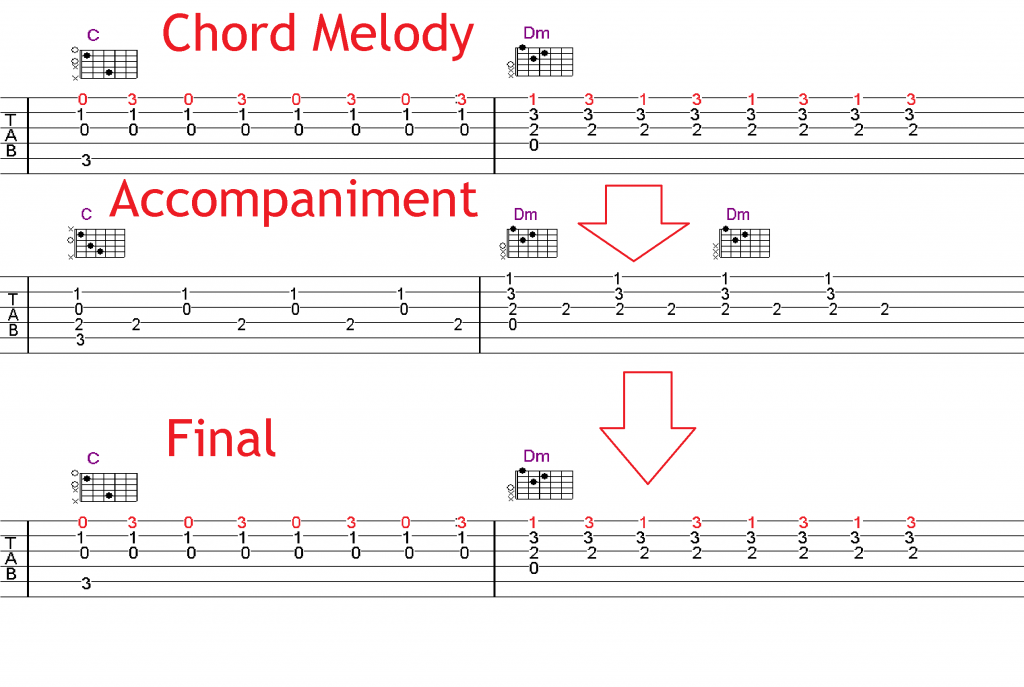
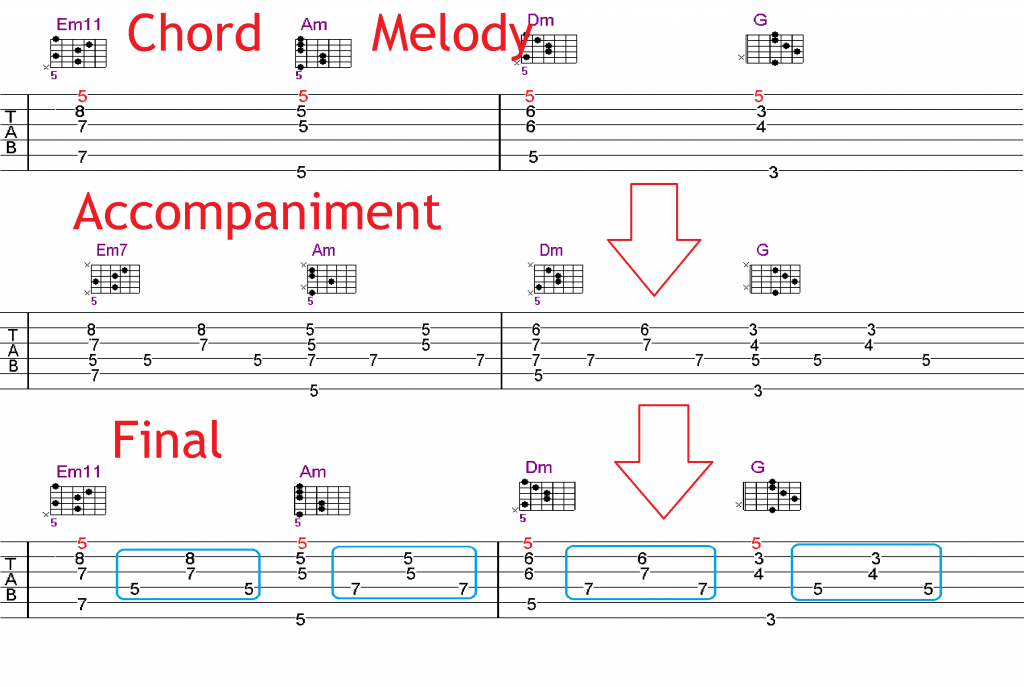
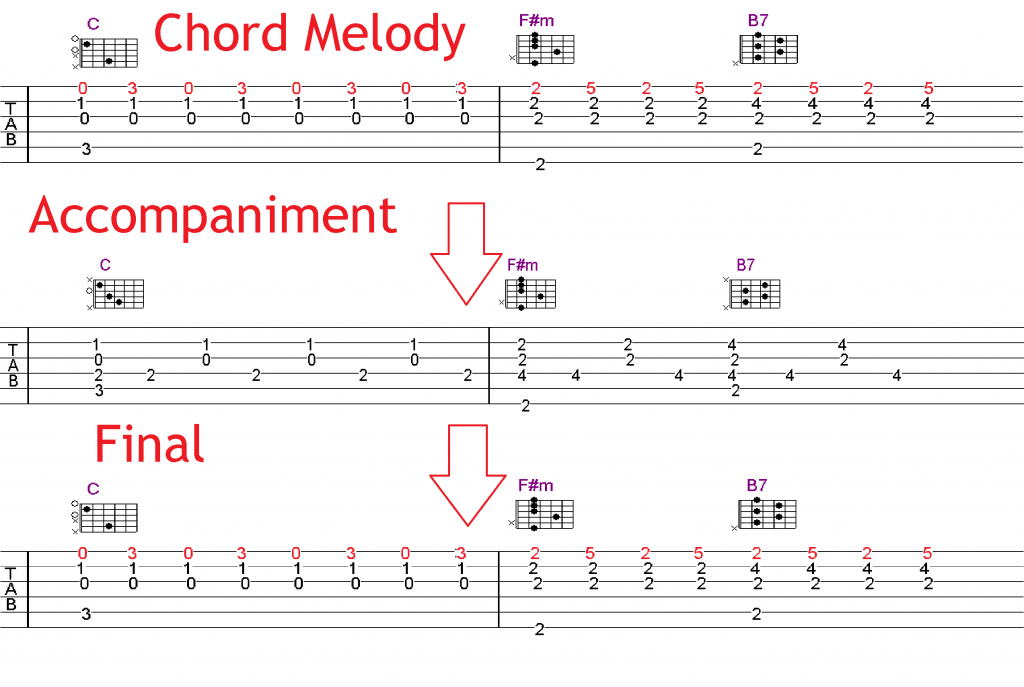

You can also see it as you are keeping the pulse of the song, while playing chord melody passages on top of it.
Click here to ask a question …
The Best Kept Secret To Chord Melody Guitar Mastery: Make your own Chord Melody Guitar arrangement
The best way to improve your solo Chord Melody Guitar playing is to do regular chord melody guitar arrangement, all by yourself.
Regardless of what level you are at, just take any songs and start to come out with your own arrangement.
You may find it hard at first, do not know where to start. You will have a lot of questions, how to do this, how to do that. Trust me, once you started, all the questions will be answered, mostly by yourself. You will start to see clearly what is missing on your toolbox.
By doing your own arrangement, you are putting everything you know into context, into real world application : notes, chords, rhythm, fretboard postions …. Everything will fall into places.
You need to commit to a fixed schedule. Start by arranging one song per month, then every fortnight. then weekly, then every 3 days, every 2 days, finally , a song a day. It’s hard at the beginning, after a while, you will start to see the pattern and the momentum will kick in.
Discipline yourself by posting the playing of your arrangement to Facebook, Instagram, Tik Tok, YouTube or any platforms you like.
It will work. Why am I so sure? Because ,… I did it daily for 5 years 😉
